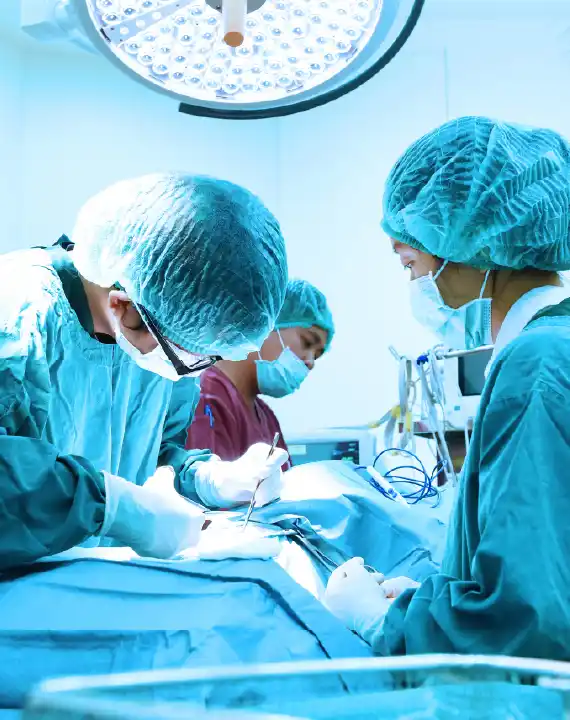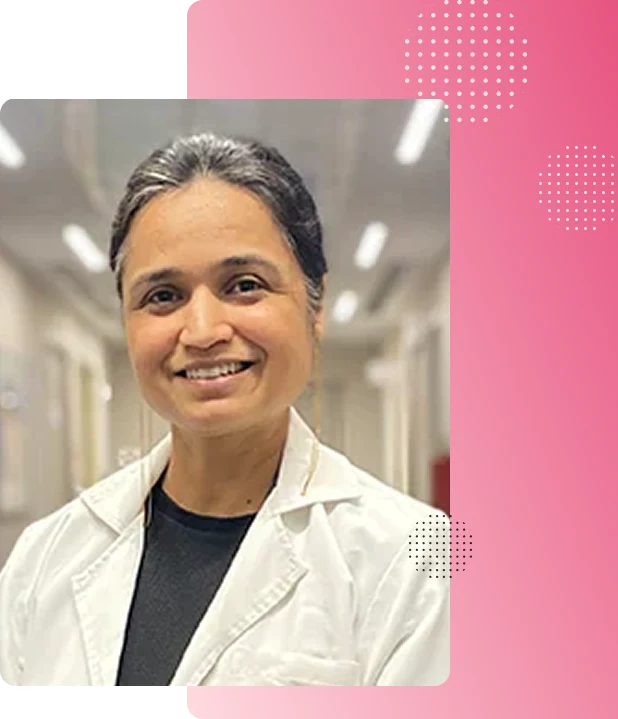Preparation
Pre-surgical evaluation (blood tests, imaging, ECG). Fasting for several hours before surgery.
Performed by Dr Aruna Kalra – Expert in Laparoscopic and Hysteroscopic Fibroid Removal
Uterine fibroids are one of the most frequent non-cancerous growths in women of childbearing age. They can cause heavy periods, pelvic pain, and problems getting pregnant. If medicine doesn't help with symptoms, myomectomy surgery is a safe and successful option.
If you are looking for fibroid removal surgery in Gurgaon, Dr Aruna Kalra, a renowned gynaecologist and laparoscopic surgeon, offers advanced laparoscopic and hysteroscopic myomectomy procedures. With over two decades of experience, she ensures precision, minimal scarring, faster recovery, and preservation of fertility — making her one of the best myomectomy doctors near you.
A myomectomy is a type of surgery that helps remove uterine fibroids (myomas) while preserving the uterus and leaving it intact. It is ideal for women who wish to get rid of fibroid-related symptoms yet still be able to get pregnant in the future.
Unlike hysterectomy (which removes the uterus entirely), myomectomy surgery targets only fibroids, allowing the uterus to remain intact. Depending on how many, how big, and where the fibroids are, the treatment can be done via laparoscopy, hysteroscopy, or open abdominal methods.
It is often recommended for women with symptomatic fibroids that cause heavy menstrual flow, pelvic pain, infertility, or repeated miscarriages are generally told to get it.
The size, number, and location of the fibroids will determine which method is best. Dr. Aruna Kalra is an expert in all the methods, which means she can give you safe and personalised care.
Each technique is carefully chosen after a detailed evaluation and imaging to ensure optimal outcomes and fertility preservation. After a thorough review and imaging, each treatment is tailored for the best clinical outcomes.
Laparoscopic and hysteroscopic myomectomy are two minimally invasive options that help you heal faster, leave fewer scars, and stay in the hospital for less time.

If fibroids are setting up a roadblock on your ability to have children, myomectomy is recommended. Some common conditions treated by this are:
Therefore it is clear, for women who wish to get rid of fibroids yet still be able to have children, myomectomy is better than removing the uterus.

An expert surgeon like Dr. Aruna Kalra can safely do a myomectomy. But all procedures come with some inherent risks, like bleeding, infection, or the chance of fibroid recurrence.
Patients can normally start doing light activities again a few days after minimally invasive procedures.
Most ladies see a big reduction in their symptoms within a month and can go back to living normally without any problems.
A myomectomy is a surgical procedure focuses on removing fibroids and preserving the uterus. The treatment approach depends on:
fibroids, endometriosis, uterine prolapse, cancer, or heavy bleeding.
total, partial, or radical hysterectomy.
abdominal, vaginal, laparoscopic, or robotic-assisted surgery.
age, medical history, and overall health.
Pre-surgical evaluation (blood tests, imaging, ECG). Fasting for several hours before surgery.
May be done in the lower abdomen, through the vagina, or with small camera-guided incisions.
Incisions or vaginal openings are sutured. Sterile dressing is applied.
Hospital stay usually ranges from 1–3 days (may be shorter with minimally invasive surgery).
Do Fibroid Require Surgery?
Vaginal delivery with fibroid uterus after Laparoscopic Myomectomy
Fibroids surgery without any cut!
Here are some frequently asked questions
